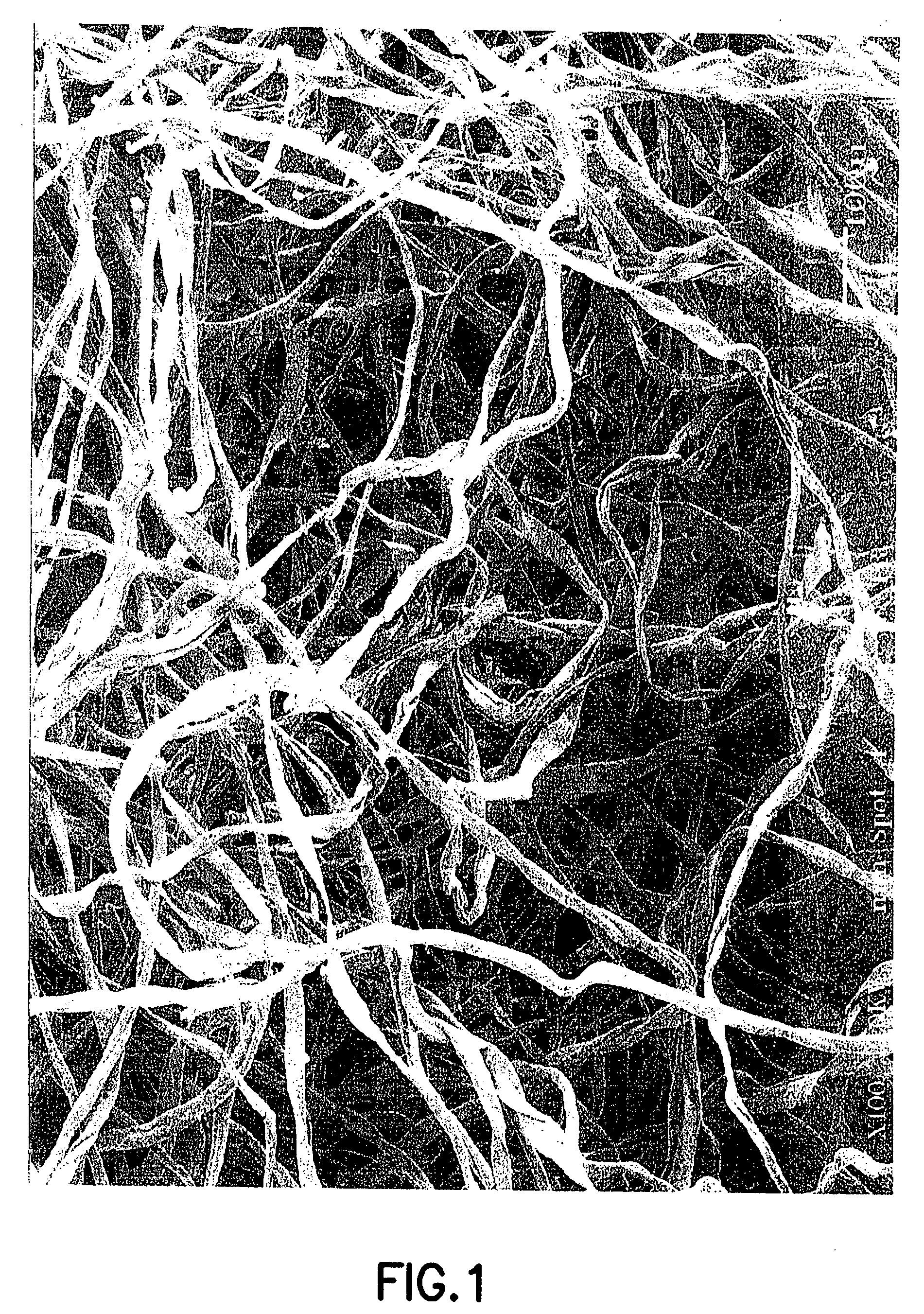Hemostatic device with oxidized cellulose pad
a technology of oxidized cellulose and hemostatic device, which is applied in the direction of bandages, dressings, pharmaceutical delivery mechanisms, etc., can solve the problems of insufficient immediate availability of equipment and trained personnel, excessive blood loss, and substantial bleeding, so as to facilitate the removal and facilitate the treatment process , the effect of advantageous biocompatibility
- Summary
- Abstract
- Description
- Claims
- Application Information
AI Technical Summary
Benefits of technology
Problems solved by technology
Method used
Image
Examples
Embodiment Construction
[0025] Oxidized cellulose is a chemically oxidized form of a common cellulose fiber such as cotton and is also known as cellulosic acid, absorbable cellulose, or polyanhydroglucuronic acid. The degree of oxidation of the fiber is a function of the carboxylation content of the fibrous cellulose material. In particular, as the number of carboxyl groups on the cellulose structure is increased, the oxidation content correspondingly increases.
[0026] Oxidized cellulose may be manufactured by the action of nitrogen dioxide gas (NO2) on cellulose fiber. Other methods of manufacturing oxidized cellulose include oxidation of cellulose fiber with aqueous oxidizing agents such as hypochlorite salts, although the use of such agents is less preferred than the use of nitrogen dioxide gas.
[0027] One method of generating nitrogen dioxide gas is by the catalytic reaction of manganese dioxide or manganese disulfide on concentrated nitric acid. Any amount of nitrogen dioxide can be generated by the m...
PUM
| Property | Measurement | Unit |
|---|---|---|
| adhesive | aaaaa | aaaaa |
| pressure | aaaaa | aaaaa |
| biocompatible | aaaaa | aaaaa |
Abstract
Description
Claims
Application Information
 Login to View More
Login to View More - R&D
- Intellectual Property
- Life Sciences
- Materials
- Tech Scout
- Unparalleled Data Quality
- Higher Quality Content
- 60% Fewer Hallucinations
Browse by: Latest US Patents, China's latest patents, Technical Efficacy Thesaurus, Application Domain, Technology Topic, Popular Technical Reports.
© 2025 PatSnap. All rights reserved.Legal|Privacy policy|Modern Slavery Act Transparency Statement|Sitemap|About US| Contact US: help@patsnap.com



